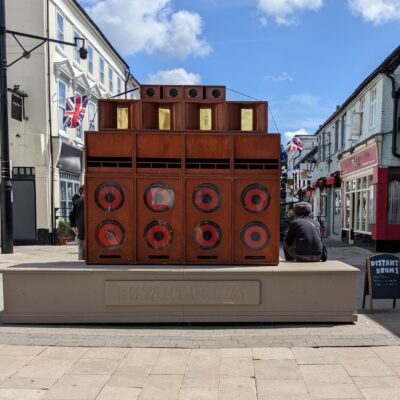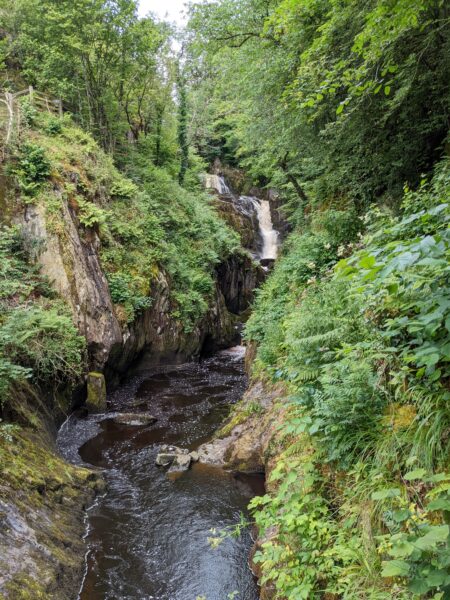
Caves and Gorges
West Yorkshire Dales
Some time ago we examined some of the caves, gorges, and natural sights of the South West. With the Yorkshire Dales stuffed to bursting with beautiful natural marvels, we thought we should take some time to explore a small selection to share with you.
We’ve collected together a number of highlights that are all within one small section of The Dales, so they can all be enjoyed as part of the same trip. For this trip, we’re about half-way up the Yorkshire Dales, on the western edge as it tracks along the A65.
White Scar Cave
The only building on the whole hillside has the word “CAVES” painted on the roof. This is the visitor centre and cafe that sits at the entrance to White Scar Cave.
If you have visited other show caves, you might be used to artificially flattened routes and passages that have been carved out to make it easier for visitors. Here, though, you get an altogether more rugged experience; so make sure you’ve got strong boots on and an appetite for some ducking, dodging, and step-climbing. Hard hats are provided and a guide is on hand to take you around the caves.
While the route requires effort (and a little flexibility in places), the rewards are high. The entrance is designed to highlight how the cave was originally discovered before landing you at a dramatic underground waterfall. The route then follows the underground river, which for the most part flows right below your feed as you traverse a walkway that twists and turns with the flow.
Along the way are numerous natural formations between the carboniferous limestone and slate, which indicate the age of the caves. There’s the Alum Lily, the Devil’s Tongue, the Witches Fingers, and many more.
After numerous low ceilings and squeeze gaps, there’s a climb that takes you to the cavern.
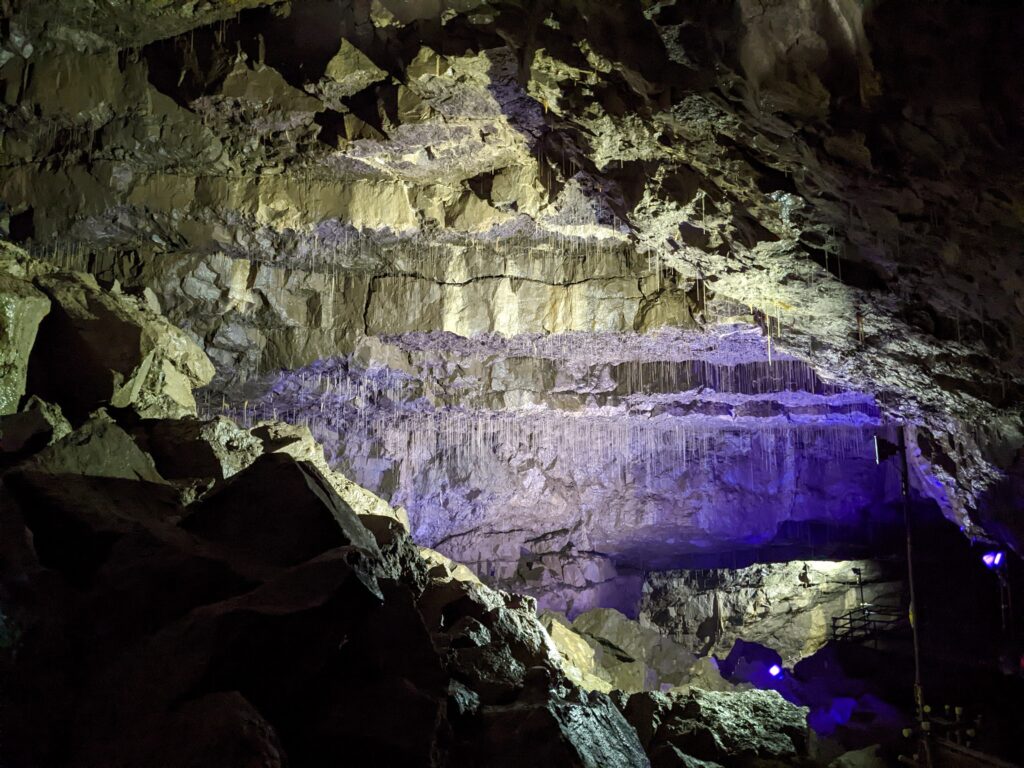
Within the cavern, there are many unusual formations, such as the natural “crazy paving” and slender stalactites. An ancient collapse caused by glacial melt water provides dramatic massive rocks and a great abyss above. The small tunnel that led to the discovery of the cavern provides another insight into the slightly claustrophobic task of exploration, which thankfully visitors don’t need to squeeze through.
The cave tour is well worth the entrance fee. The guides are knowledgeable and the route is amazing. Things underfoot and overhead and rough and ready, but this is better than letting the builders loose with sledge-hammers and concrete to make things easier for visitors.
Malham Cove
Malham Cove offers a more gentle experience. Starting in the village, where the in-demand Yorkshire Dales car park is located, it’s about a mile to walk across the hill to Malham Cove. The walk is pleasant as you track along the river to the famous cliff.
Depending on the season, there is a waterfall that descends from the clifftop into the river. When water is more sparse, it’s like a giant shower dripping dramatically into the flow. The cliffs are a spectacle, a great crescent of vertical rock, home to nesting birds and the occasional climber.
At the top of the cliff, following a steep path, the rock has been eroded into a dramatic causeway, which was used in the filming of Harry Potter and the Deathly Hallows.
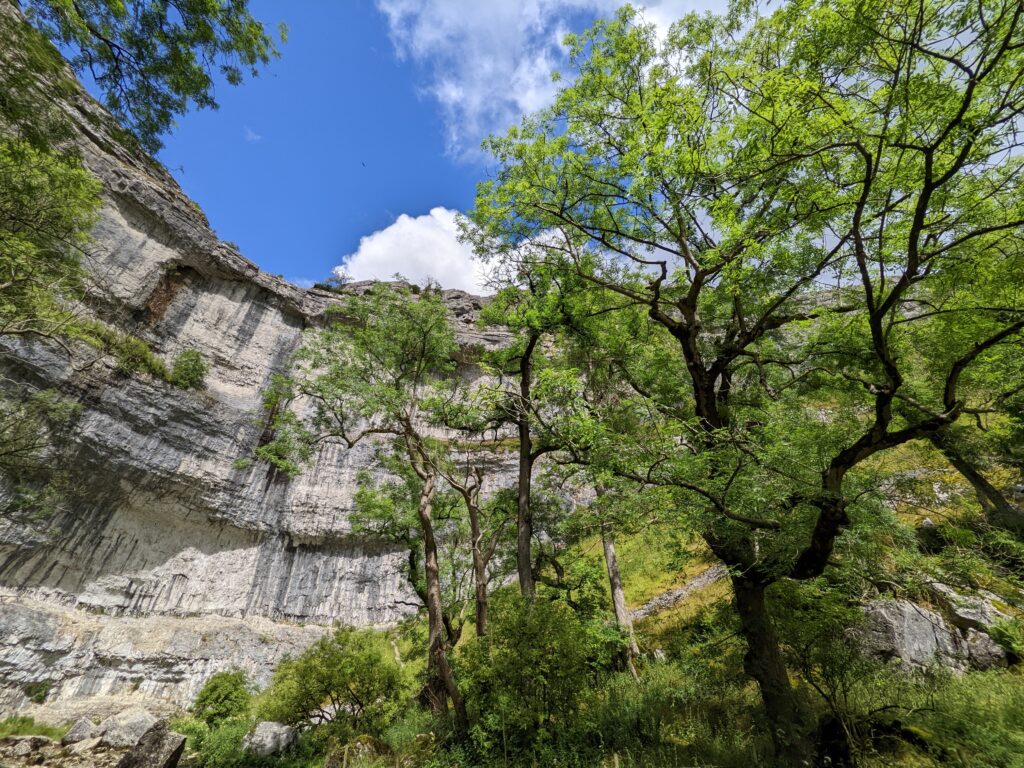
This is a great walking destination, with the benefit of the village on your return journey if you don’t fancy taking a picnic with you on the walk.
Ingleton Waterfalls Trail
For those who prefer a longer hike, the Ingleton Waterfalls Trail provides a reasonable challenge. It’s a good three to four hours of hilly going, tracking the River Twiss and then the River Doe, each offering dramatically different waterfalls along their length. The Doe has big falls, rushing white water gushing over long drops, whereas the Doe is hemmed in by steep rocks sides and offers many drops and cauldrons along its dark churning length.
The walk is a mixture of woodland and countryside with quite a lot of steps to get you up and down the elevations. You are heading upstream on the first section, so there are more up-steps than down-steps, though you’ll be doing both. The waterfalls are clustered towards the end of this section, so you’ve got a good motivation to keep going as well as a good resting point when you hit Thornton Force.
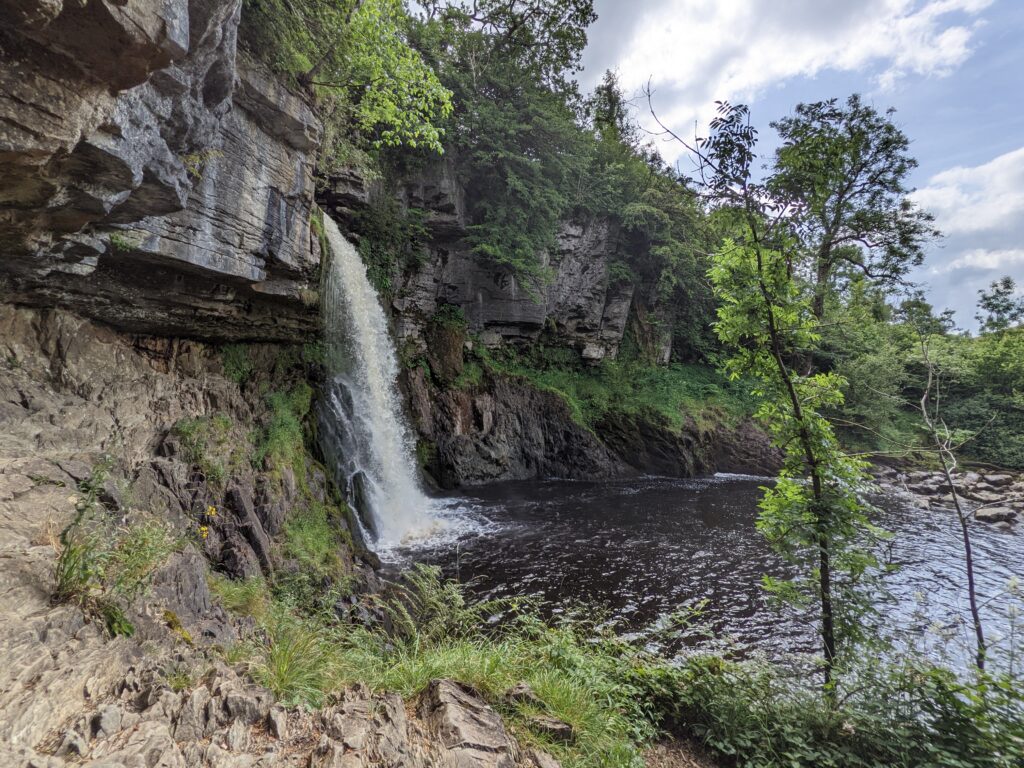
The middle section is across the hills to join up with the River Doe. There are a couple of refreshment opportunities along the way if you need to be revived. When you reach the Doe, the dramatic difference between the rivers is immediately apparent. In this section, where you follow the river downstream, you might be reminded of Lydford Gorge.
Trapped between steep rocky walls, the river surges over cascading drops, foaming most of the time and dramatically dark everywhere else.
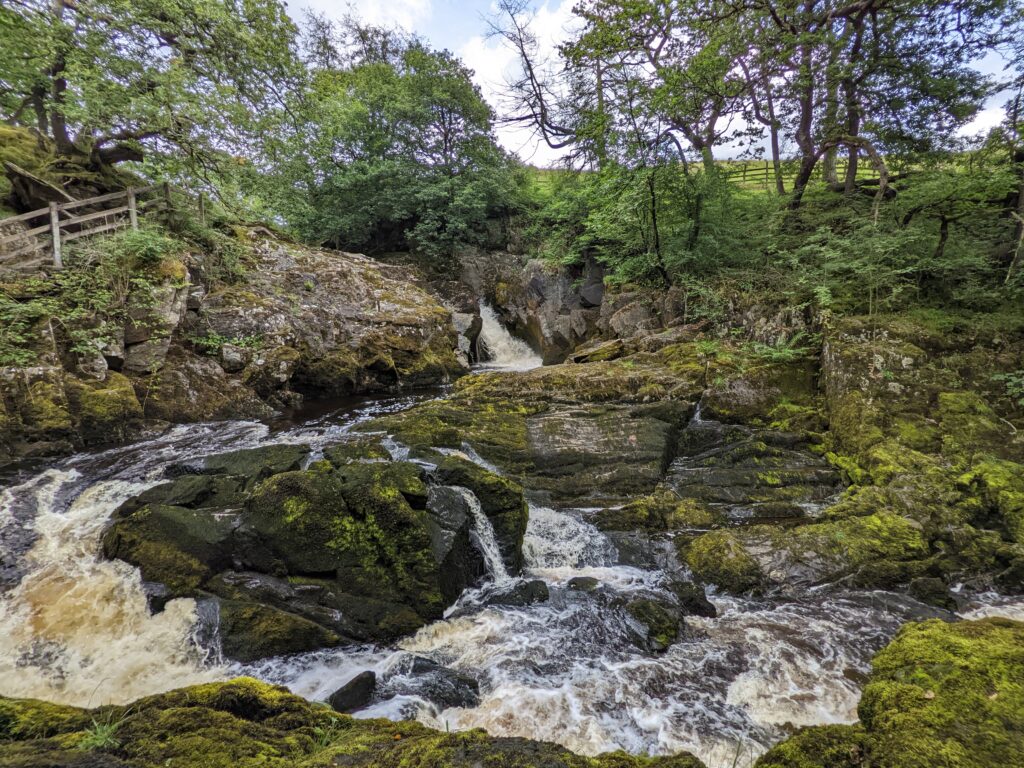
You can, apparently, complete this route in a couple of hours. Personally, I think you’d need to avoid looking at the beauty to achieve a time like that. Most people will want to bask in the atmosphere of the place; the views, the sound of the water, and the vibration of the falls as the water thunders down. Make sure you set aside at least four hours, even more if you’re a real nature fan.
At the end of the route is the small village of Ingleton, where the two rivers join to become the River Greta. A well-deserved stop in one of the local food spots would be well earned.
The Yorkshire Dales
You can hardly move in the Yorkshire Dales without stumbling across natural beauty. As you drive between locations you’ll find tracks across the dry-stone walled hills that offer great 360 degree views. There are vast areas of land with barely a building in sight apart from the crofts that are made from the same stone as the walls.
Hopefully, this small selection of particularly wonderful locations gives you some jumping-off points to discover some rare landscapes.
There is lots more to see in this area, there are two other show caves not far away and lots of waterfalls (including Hardraw Force, one of several locations used in the filming of Robin Hood: Prince of Thieves – Aysgarth Falls is also on the Yorkshire Dales and was used in the Little John scene, but is much further east).
The Yorkshire Dales really are one of the most wonderful locations to visit in the UK.
Written by Fenton on


